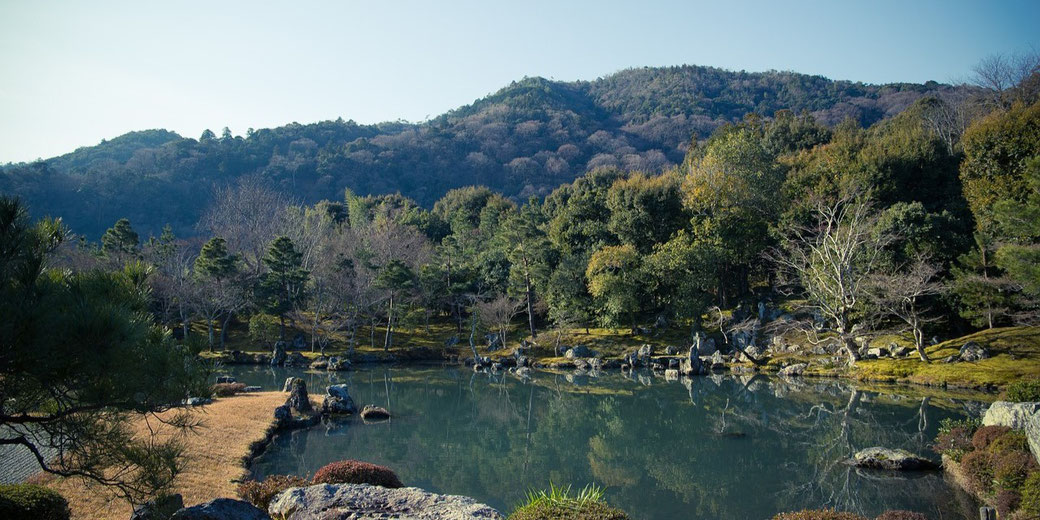The intriguing enigma of Japan's keyhole tombs

In the western region of Japan, archaeologists have studied a series of large burial mounds known as keyhole tombs.
Their distinctive shape, which combines a circular rear mound with a rectangular front section, gives them the appearance of a keyhole when viewed from above.
Many of these structures reach incredible sizes, with some exceeding 400 metres in length and more than 30 metres in height.
When were they made?
The construction of keyhole tombs began during the early Kofun period, around the mid-third century AD.
Archaeological evidence shows that the earliest examples appeared in the Nara Basin, which was a centre of political power in Japan at the time.
The period saw the rise of influential clan leaders who consolidated territories and established hierarchical societies.
As time progressed, the size and complexity of the tombs increased. The largest of all, the Daisenryo Kofun, is traditionally attributed to Emperor Nintoku and likely dates to the late fourth or early fifth century AD.
This kofun is part of the Mozu-Furuichi Kofun Group, a collection of over 40 keyhole-shaped mounds in Osaka Prefecture that was inscribed as a UNESCO World Heritage Site in 2019.
Many other grand tombs were constructed across the Kinai region and further afield in Kyushu and Honshu, which suggests the expanding influence of powerful rulers.
Keyhole tombs were constructed for several more centuries. By the late sixth and early seventh centuries AD, their use declined as political authority shifted toward new centres and Buddhist burial practices gained popularity.
The gradual reduction in their size and frequency reflects significant changes in society, including the growth of a more centralised imperial government that adopted new cultural and religious traditions from the Asian mainland.
Why were they built?
Keyhole tombs served as burial mounds for elite individuals who held political and military power.
The effort required to construct such very large monuments indicates that those buried within had control over large numbers of labourers and resources.
Grave goods found in some tombs, such as bronze mirrors, iron weapons, and decorative items made of gold and jade, suggest that the occupants were part of a warrior aristocracy that valued military prestige and connections to continental trade networks.
Other archaeological finds, including haniwa clay figurines that were placed on and around the tombs, indicate that funerary rituals were detailed public events.
These clay figures depict warriors, attendants, animals, and structures. The tombs may have reinforced political authority by serving as conspicuous monuments to a ruler's power and his clan's status.
Engineering marvels
Builders excavated large moats around many tombs to construct multiple tiers, which relied upon careful layering of soil to prevent collapse.
The largest tombs, such as the Daisenryo Kofun, covered areas of more than 30 hectares and must have required the coordinated work of thousands of labourers over several years.
Grave chambers inside the mounds were often built with stone walls and ceilings, which formed protective chambers for the deceased and their grave goods.
Some chambers contained wooden coffins, while others had stone sarcophagi. The exact alignment of many tombs indicates that their builders used detailed surveying techniques, and the uniform keyhole shape across wide areas shows common cultural and political practices.
The sheer scale of the tombs demonstrates the ability of early Japanese rulers to mobilise large numbers of people and materials.
Enduring mystery
Historians continue to debate the identity of many of the individuals buried in the keyhole tombs.
The Japanese Imperial Household Agency restricts excavation of the largest tombs because they are regarded as imperial mausoleums.
As a result, clear information about their occupants is unavailable. Scholars rely on smaller tombs and nearby sites to understand their construction and use.
The purpose of the distinctive keyhole shape also remains uncertain. Some theories propose that the design had symbolic meaning related to authority or ceremony, while others suggest practical reasons for accommodating ceremonial processions.
Because many of the largest tombs have never been excavated, questions remain about the specific identities, rituals, and beliefs of those who constructed them.
Regardless, they still attract attention from researchers who want to finally uncover their full story.
What do you need help with?
Download ready-to-use digital learning resources
Copyright © History Skills 2014-2025.
Contact via email
With the exception of links to external sites, some historical sources and extracts from specific publications, all content on this website is copyrighted by History Skills. This content may not be copied, republished or redistributed without written permission from the website creator. Please use the Contact page to obtain relevant permission.





